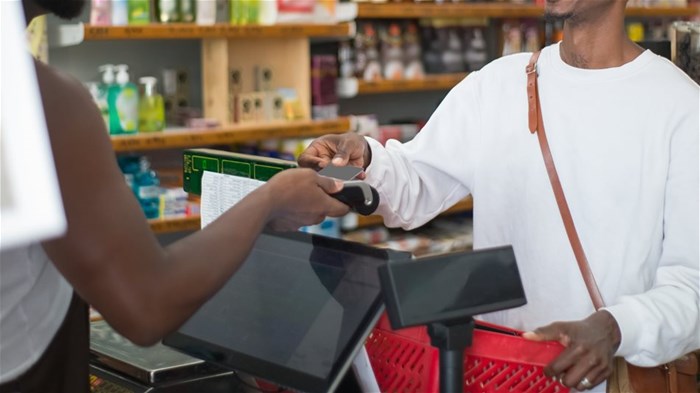In a landscape where rising electricity costs, inflation, and ongoing concerns about loadshedding loom large, South African households are closely monitoring their expenditures.

Image supplied
Among these expenses, groceries emerge as one of the most substantial, accounting for 28% of South African incomes according to FNB. It becomes imperative to grasp consumer priorities in this scenario. Drawing from Gathr's analysis of over a million transactions, co-founder of Finch Technologies, Christopher Ball dives into the behaviours and preferences shaping South African grocery shopping.
Grocery store preferences
Grocery shopping decisions are intricate, and influenced by factors such as income and lifestyle preferences. In South Africa, where grocery expenses rank as the second-highest monthly expenditure after loan repayments, understanding the patterns of spending, whether in-store or online, is vital.
According to the African Bank's Consumer Research Report for 2023, focusing on the low and middle-income market, Shoprite and Pick n Pay emerge as the top choices for groceries across a range of subsegments, with Spar closely trailing behind in third position.
Average basket sizes and spending patterns
Typical expenditures and basket sizes of South African households, vary depending on fixed expenses and disposable income of the consumer. Gathr’s insights provide a look at Shoprite, Checkers, Woolworths, and Pick n Pay spending patterns.
While Checkers and Shoprite dominate the market with 62% of purchases, Woolworths and Pick n Pay carve their niche with 11% and 26.6%, respectively. At a closer look, Pick n Pay customers are spending well above R420 per shop.
When it comes to above-average basket sizes, Shoprite consumers can spend anywhere upwards of R17,000, which might present other insights into the type of consumers – are they using these products for their restaurant businesses or reselling products at spaza shops?
In-store vs. online delivery preferences
A significant trend in the South African market is the growing preference for online grocery shopping. As technology reshapes consumer experiences, delivery management platforms such as Loop and logistics companies like Pingo are streamlining the process for South African retailers to provide online delivery options.
Kimberley Taylor, co-founder of Loop says "There are many aspects that come into play to make on-demand deliveries successful - it really takes a village. However, technology is one important part, and its role is to provide simplicity, visibility, and efficiency to the various people within this part of the supply chain. That would include all technology that touches the consumer, the drivers or the back-office operators and customer support services."
These platforms serve as catalysts for the success of services like Checkers Sixty60. Their usage is steadily increasing, with Sixty60 orders accounting for 12.2% of all purchases from Checkers. This shift mirrors the evolving lifestyles of consumers and the convenience offered by digital solutions.
Cashback trends
ATM withdrawal fees are still a reality for many consumers, prompting them to seek alternative ways to minimise costs. One prevalent method is opting for cashback transactions at tills.
Retail giants like Checkers, Shoprite, Pick n Pay, and Boxer offer cashback services, leveraging them as incentives to attract more customers.
While Capitec, for example, charges R10 for every R1,000 withdrawn from an ATM, cashback transactions at grocery stores typically incur a lower fee of around R2. However, there's usually a limit on the amount that can be withdrawn at the store.
This data indicates a shift away from traditional ATM withdrawals towards more integrated and seamless payment experiences. Customers are becoming increasingly savvy about transaction fees, striving to save wherever possible.
Timing of monthly shopping cycles
The timing and frequency of grocery shopping trips are intricately tied to payday schedules, debit orders, and other financial obligations. Analysing these aspects sheds light on consumer behaviour dynamics.
While the distribution of shopping days for Pick n Pay, Shoprite, and Checkers remained relatively stable, with peaks observed between the 26 and 29, Woolworths experienced a significant surge in shopper share towards the end of the month.
The benefit of understanding transactions for retailers and banks
At Gathr’s recent event in Johannesburg, two groundbreaking features were unveiled, and set to redefine financial management. Central to the event was the introduction of transaction categorisation, offering a comprehensive analysis of customers' financial behaviours. With 36 distinct categories, this feature provides unparalleled insight into spending patterns, income streams, and financial commitments.
Implications for retailers
The implications of these insights extend beyond individual consumers to the broader landscape of retail and hospitality industries. As consumer preferences evolve, retailers face the imperative of adapting their strategies to meet changing demands. The emergence of Woolworths Now Now, scaling up to compete with the hospitality sector, exemplifies this trend.
With fried chicken businesses like KFC and Chicken Licken poised to capitalise on consumer preferences, the competitive landscape is ripe for innovation and adaptation.
From the aisles of grocery stores to the digital realms of online shopping, each transaction tells a story of financial decision-making. By leveraging insights from platforms, stakeholders across industries can navigate this landscape with agility and foresight, driving innovation and empowering consumers to make informed choices for financial well-being.


































